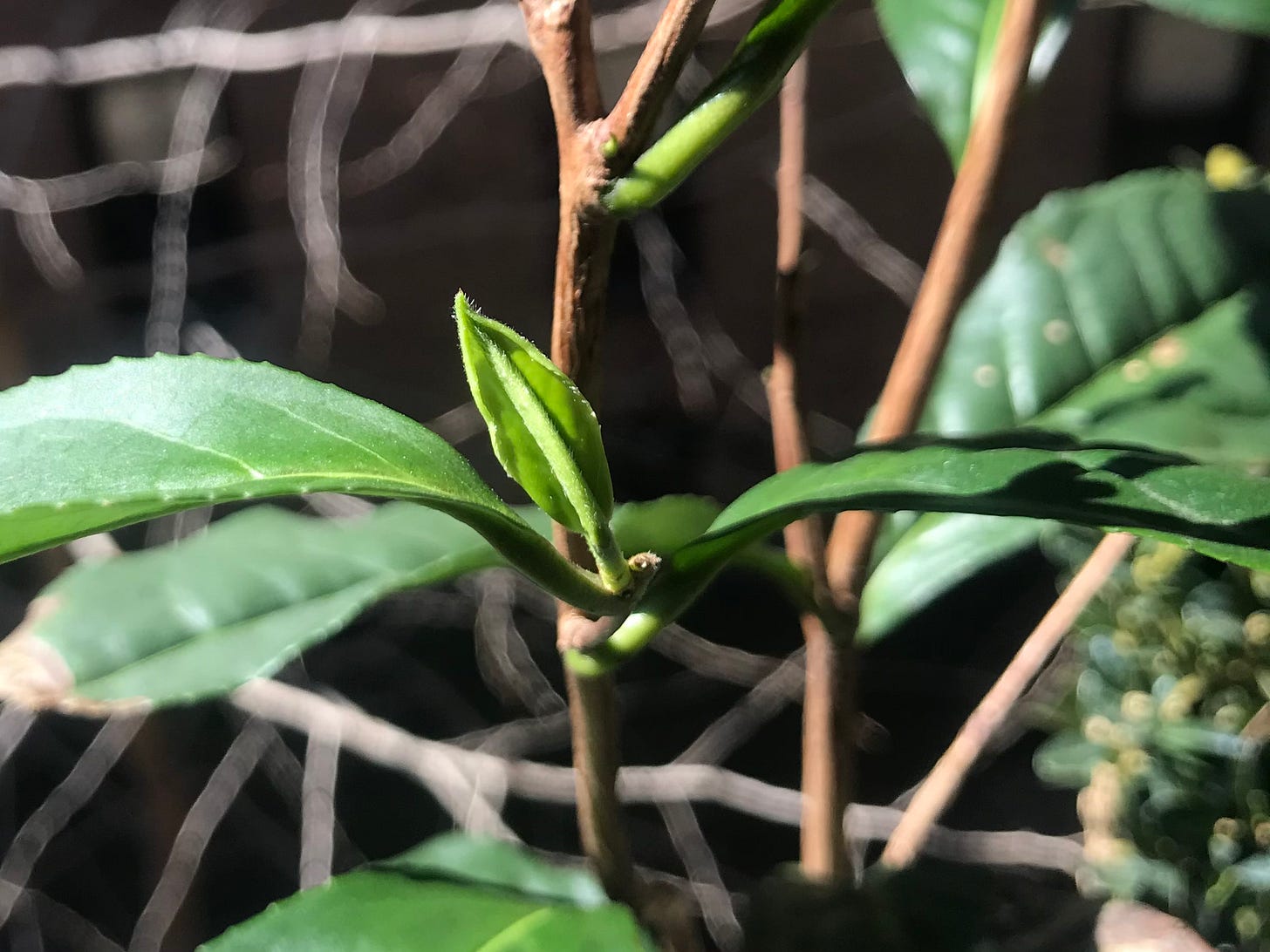You know your blog has made it when you miss a week of posting and several of your tens of readers reach out and ask where your Friday email was. The simple answer is that last week was a bad brain week, and as I’m doing this project to keep my interest in writing alive in a fun low-stakes way, I’m accepting that sometimes the juice isn’t there. But still, the fact that anyone has found insight or interest in this blog surprises and delights me daily. Thanks for joining me on this journey.
Some new arrivals and construction projects aside (stay tuned for more on that next week), this is a dull time for my bonsai garden. I’ve begun weekly fertilization of the trees still in dormancy. I still have some pre-spring trimming to do, but I’m really just sitting back and waiting for new leaves to grow. Buds have appeared on the majestic ginkgo across the fence by my bedroom window; the other day I found myself staring for a good ten minutes, my eyes scanning across the branches.
My tea plant, pictured above, is the first of my trees to emerge from hibernation. In response to a light trim a few weeks ago, it responded by pushing new bud growth out of previously dormant nodes down the branches, a phenomenon called back budding. Pruning is the essence of bonsai, and essential to growing any tree. Without breaking off fresh tissue—be it by pruning shears or the wind of a storm—plants grow weak and spindly. Trimming young growth forces a tree to redirect its energy inward, giving greater strength to older branches. Disaster planning is baked into the tree’s DNA.
When I was younger, I thought that trees died every autumn when their leaves fell, and that they’d come back to life in the spring. I was hazy on the metaphysics, but not entirely wrong. Trees, like bears, go into a state called dormancy, or torpor. It’s metabolic economics: with reduced sunlight and the risk of snow cover, it costs more energy for the tree to be active than it could hope to gain through photosynthesis. So the tree sheds its leaves, slows its metabolism to a crawl, and signals its cells to halt their division. In return, dormancy allows a tree to thrive in a climate that would otherwise kill it over the winter.
One year into quarantine, I’m envious of trees that know that their dormancy period has an end date. This Atlantic essay on pandemic brain fog hit me close to home. I often feel like I’ve forgotten how to be a person, and not in the cool feral way, but the basics of social interaction way.
We can keep talking about trees when we meet in person, right? Because I have more thoughts to share about dormancy.
Tree reading
Hardly news, but new to me. There is a forest in Utah of 47,000 aspen trees that has been growing for 80,000 years. All of the trees are clones, sharing an enormous root system. And it’s dying, because humans killed off the predators that kept the deer population in check. [The Smithsonian]
Scientists have found a 60-foot-tall petrified tree on the island of Lesbos, with its roots and leaves intact. The fossil is 20 million years old! [The Guardian]

